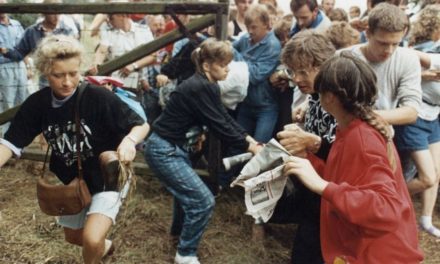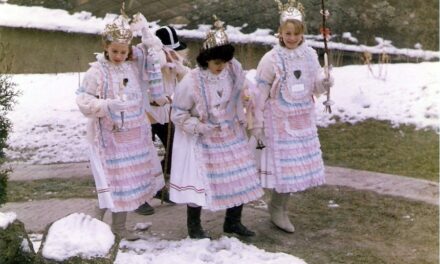The history of the Chain Bridge candelabra is an adventurous one: the originals turn up in surprising places.
In the photo taken in 1949, the surveyor leans on the bottom of the chain bridge lion, measuring whether everything is straight before the start of the big celebration. One of the joyous events of Budapest, lying in ruins after the Second World War, was that the Chain Bridge, blown up by the fleeing Germans, was rebuilt so quickly, and moreover, it was handed over on the hundredth anniversary of its inauguration. What could be saved from the structure that fell into the Danube, a few candelabra remained on the pillar gates, but most of the original ones had to be rebuilt. So we see the surveyor, from the post-World War II series, which the capital is now preparing to auction off, next to one of the new, period-correct lighting fixtures.
For days, the press has been referring to the of the 14 lamps of the Lánchíd candelabra row on August 2 Those who take advantage of the opportunity do not need to dig deep into their pockets, the items are offered for auction at a price of around one million forints per piece, the real price will depend on the determination of the bidders.
The chain bridge candelabra has an adventurous history. The bridge itself is one of the national symbols, so its fate is a sensitive topic. So it doesn't matter what happens to its decorations.
An interesting difference between today's situation and the renovation in 1949 is that they did not sell the original candelabra of the Chain Bridge, but instead found a way for people to enjoy it again at another location.
Among Fortepan's treasured recordings, the photos taken in 1945 that show the ruins after the bombing are particularly interesting. In the photo exposed from the top of the Tunnel, you can see that the lions of the Buda bridgehead remained intact, and the pillar gates remained standing in the bed of the Danube.
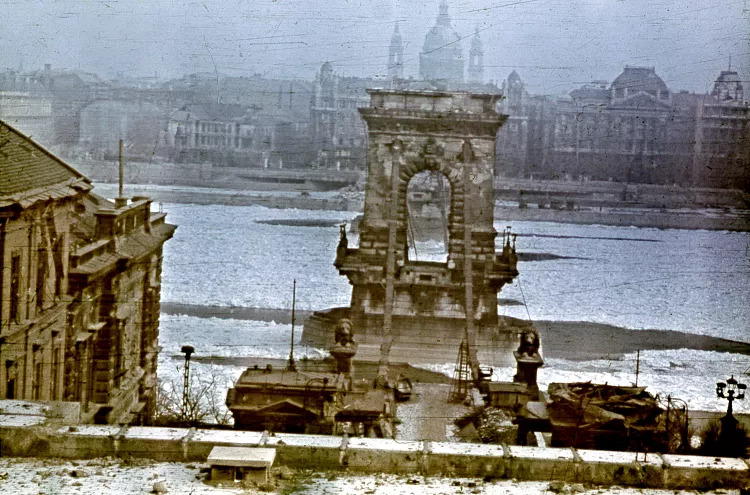
Chain Bridge, 1945 - it can be seen that the candelabras on the pillar gates remained after the bombing Attila Fortepan Glázer
The remaining 4 candelabras on these pylons, the ice floes currently moving on the river provide a white background for the light fixtures standing on the corners, so they look good in the picture. These lamps are still part of the original Széchenyi Bridge. The entire row of candelabras could not be saved, so they were reconstructed in time-honored fashion. The copies decorated the bridge from 1949 until the current renovation.
The original candelabras were not wasted either. It was possible to save less than what was originally on the bridge, but enough specimens were left to be worthy jewels of the Városligeti-tó bridge.
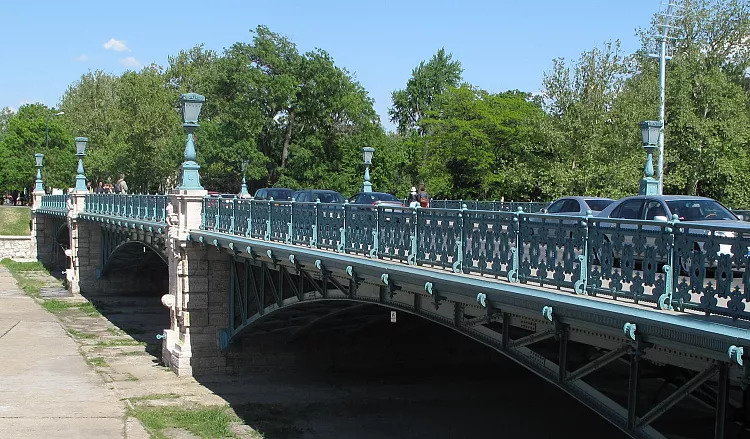
The original candelabra of the Chain Bridge on the Zielinski (Millennium) Bridge over the lake bed in the City Park Wikimedia Commons / Dezidor
When the Chain Bridge was renovated in 1949, Budapest was in ruins, everything had to be renovated at the same time. Still, there was an urge and an effort to ensure that the candelabras from the time of István Széchényi were not read or sold, but moved to another bridge.
The original candelabras of the Lánchíd are with us not only on the bridge structure in Városliget. Thanks to a good idea, the beautifully restored copy decorates the old baroque square of the Buda side, Batthyány Square.
The light fixture placed in the middle of Batthyány Square shows that one of the reformation-era candelabras of the Széchenyi Chain Bridge can decorate a square representatively.
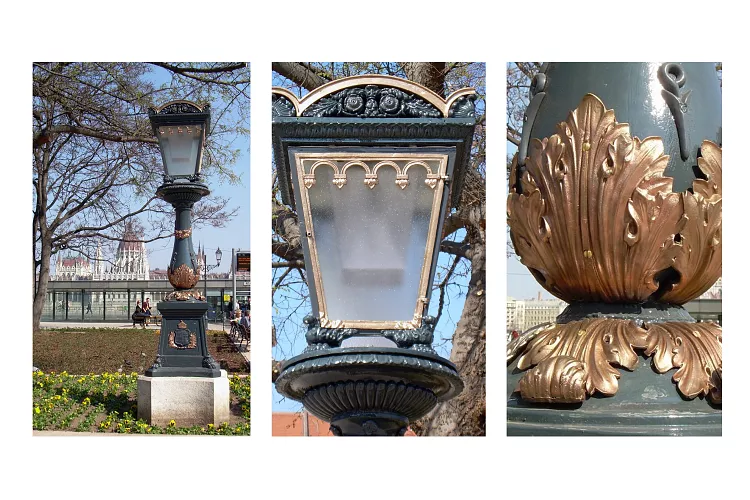
Batthyány square photo of one of the original candelabras of the Chain Bridge: kandelaber-manufaktura.hu
Before the upcoming auction, it may therefore arise that in our public spaces, where there are no really elegant or valuable works, one of the lamps of the row of candelabras offered for sale could be an excellent decoration. Although a chain bridge light fixture could stand as a statue in the main squares or parks of outer districts, it is not necessary to think within Budapest.
By setting up one piece of the Chain Bridge lamps to be auctioned in rural cities or settlements, on the shores of Lake Balaton or in important locations of Széchenyi's life, it would be well established that the Chain Bridge is not only a symbol of the capital, but also of national unity. At the time of its inauguration in 1849, it was praised for not only connecting Buda with Pest, Transdanubia with the Great Plain, but also connecting the west with the east in the heart of Europe.
A piece of our built heritage is now for sale, which accompanied the daily lives of several generations in Budapest from the Second World War to the present day. Its existence was already threatened once by modernization under socialism, when the specialist authority planned a greater brightness for the bridge when modernizing the lighting. The legendary city defender Mihály Ráday spoke out in the TV program Unokáink sem semp zet, but mainly behind the scenes he confronted the authorities, and his steadfastness was crowned with success. If he had not considered the matter important then, the so-called whip-handled lights would have been on the bridge for decades. When selling the candelabras he protected, Budapest also sells a little of his past.
Author and source: Gábor Ács / euronews.com
The full article HERE .



